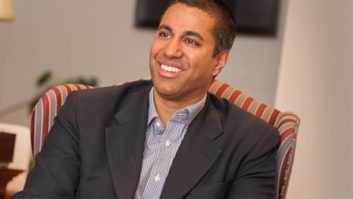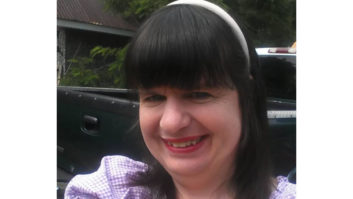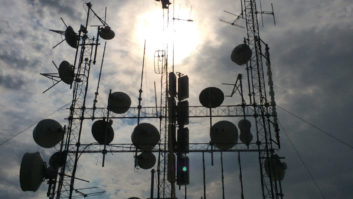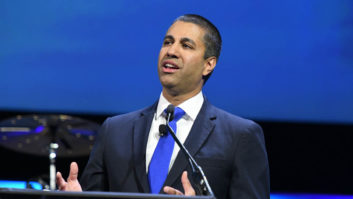
What happens next in the area of FM translators for AM stations? We turn again to John Garziglia of law firm Womble Carlyle Sandridge & Rice, who keeps a close eye on this sector.
Radio World: What was your reaction to the outcome of more than 1,000 Class C and D AM stations applying in the most recent window?
John Garziglia: Surprised. The strong reaction tells me that AM station owners really do care about serving their listening audiences in the very best way possible.
RW: Why do you think interest was so strong?
Garziglia: In talking to broadcasters who have already paired an FM translator with an AM station, I have never heard an AM station owner lament that obtaining an FM translator was a bad idea. Rather, I repeatedly hear that even if the FM translator covers just a fraction of the AM coverage area, having the “FM” designation on sales materials alone brings in advertisers that otherwise would not buy. Too many merchants and business owners have the fallacious notion that no one listens to AM anymore. Rather than battling that fake fact, an AM station obtaining an FM translator picks up business that it would otherwise not enjoy.
RW: What further conclusions do you draw from these results or from what you’re hearing from your own clients?
;Garziglia: There are some forward-thinking AM broadcasters that view an FM translator as a bridge to an all-digital AM station. The FCC has yet to authorize all-digital AM, and there will be a substantial capital cost to implementing all-digital AM. For AM stations with consistent day/night coverage areas, and otherwise robust signals, all-digital may be the ultimate revitalization of the AM band as increasing numbers of radio receivers with HD capabilities proliferate. No AM station would likely do a hard-cut to all-digital. But, with an FM translator to serve the analog listening audience, all-digital operations to that portion of the listening audience with HD radios becomes attractive.
RW: Briefly describe the next steps in the FCC’s process including MX and auction considerations.
Garziglia: The current 1,000+ applications will be sorted into two silos: “singletons,” which are those that do not conflict with any other application filed in this window, and mutually-exclusive applications that do conflict.
The FCC is expected to soon publish a list of the singletons, and give each of those applicants a time period in which to file a complete application which, if grantable, will result in a construction permit that will be good for three years.

For the mutually-exclusive applicants, the FCC will likewise publish a listing, and give those applicants a time period to remove the conflicts, either through technical changes to the application or through agreed-upon dismissals of applications. If the conflict is removed, the applicant will be given the opportunity to file a complete application. If the conflict is not removed, then the mutually-exclusive application will go to an FCC auction.
The big question now on everyone’s mind is timing. While there is no exact number of singletons, a good estimate is that 80% of the applications filed are singletons. These 800+ applicants, representing 800+ AM radio stations, are very anxious for the FCC processes to move forward. Sooner, rather than later, it can be expected that these 800+ AM station owners will start calling, emailing and visiting Chairman Pai and the Audio Division staff asking when the singleton list will be released and the opportunity to file complete applications commenced. For its own bureaucratic sanity, the FCC should expeditiously issue the singleton list and likewise move forward quickly on the settlement window for mutually-exclusive applications.
RW: Any opinion about when and how we might see action on other AM revitalization rule changes from the FCC soon? Chairman Pai seems to like using the fall Radio Show to announce such things.
Garziglia: While there are other items in AM revitalization still to be addressed by the FCC, none has benefits as wide-ranging as the FM translator windows for AM stations. The best news that Chairman Pai can bring to AM broadcasters at the Radio Show is an expedient schedule for processing the 1,000+ just-filed applications, and a scheduled date for the opening of the next AM-exclusive FM translator filing window for Class A and B AM stations.
RW: What else should we know or be watching for right now?
Garziglia: In the category of pending issues to watch, “any-channel” and “interference” are both salient topics.
The topic of “any-channel” concerns FM translator channel change applications, both as an amendment to existing ungranted application to enable the removal of mutual-exclusivity, and to remediate a claim of interference once an FM translator is on the air. The FCC now has a proposal filed by the NAB before it in RM-11787 to allow FM translators to modify to any commercial-band channel.
The topic of interference will impact some of the FM translators applied for by AM stations, either prior to a grant or after the FM translator goes on the air. The FCC has before it a proposal to amend the translator interference rules filed by Aztec Capital Partners, Inc. in RM-11786. Every FM station and existing FM translator owner should be working with its consulting engineer in the next several weeks to ascertain whether any FM translator applications filed in this window have a potential to create harmful interference to its established listening audience. The FCC’s application processing procedures for the long form FM translator applications will give only a short amount of time for filing objections. Therefore, it behooves existing stations to watch the changing FM spectrum landscape for the foreseeable future.












